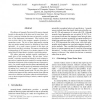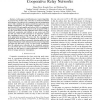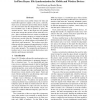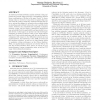5901 search results - page 1021 / 1181 » Algorithms for Wireless Sensor Networks |
166
click to vote
SIGMOD
2009
ACM
15 years 10 months ago
2009
ACM
We consider the problem of collectively approximating a set of sensor signals using the least amount of space so that any individual signal can be efficiently reconstructed within...
SP
2008
IEEE
15 years 4 months ago
2008
IEEE
The efficacy of Anomaly Detection (AD) sensors depends heavily on the quality of the data used to train them. Artificial or contrived training data may not provide a realistic v...
ICC
2009
IEEE
15 years 5 months ago
2009
IEEE
— In this paper, a distributed power control algorithm is proposed for wireless relay networks in interference-limited environments. The objective is to minimize the total transm...
76
Voted
USENIX
2003
14 years 11 months ago
2003
The open-source rsync utility reduces the time and bandwidth required to update a file across a network. Rsync uses an interactive protocol that detects changes in a file and se...
103
Voted
NOSSDAV
2009
Springer
15 years 4 months ago
2009
Springer
In multi-hop wireless networks, random network coding represents the general design principle of transmitting random linear combinations of blocks in the same “batch” to downs...




